Moon mission "Bereshit" - the characteristics of the device, a series of maneuvers and the longest journey to the moon
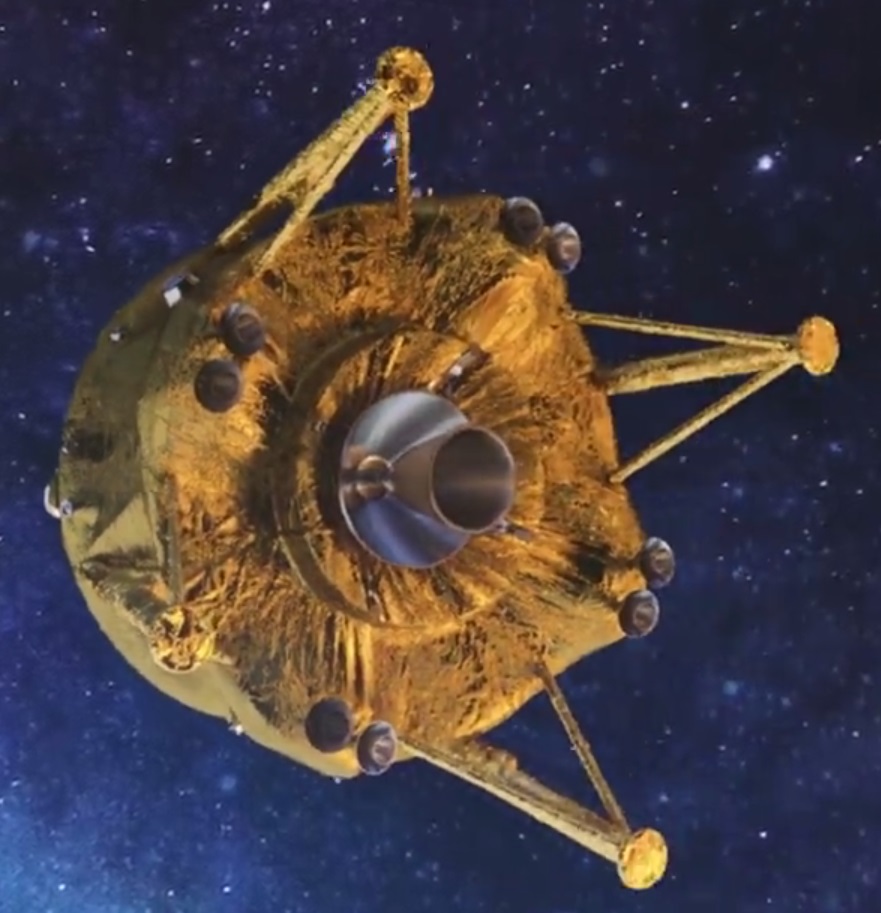
What engine is installed on the Bereshit device? What kind of scientific instruments are on board? What maneuvers must make the device to get to the moon? How many kilometers will he fly in 47 days of his flight?
Previously published materials about the mission "Bereshit":
By force and by means of only one small private company, it is impossible to send the lunar apparatus into space, but with the help of the international space community it is possible to turn an idea into a fully-fledged project that is currently being implemented.
')
Project participants involved in the mission "Bereshit":
- a team of young Israeli scientists and engineers from the company SpaceIL,
- NASA (USA)
- ISA (Israeli Space Agency),
- IAI (Israel Aviation Industry Concern),
- company Spaceflight Industries (USA, organizer of the launch of the Bereshit apparatus into orbit),
- SpaceX company (USA, Falcon 9 launch vehicle),
- Swedish Space Corporation (Swedish Space Corporation),
- Cobham company (Sweden),
- Company Ramon Chips (Israel).

After all, SpaceIL is a small organization by world standards, its staff includes about 200 people, and most of them are volunteers, scientists and engineers who “strive to promote the development of technological and scientific progress in Israel.”
In the photo, Daniela Geron is an engineer at SpaceIL.

The total cost of developing, preparing and organizing all actions for the implementation of the Bereshit project is $ 100 million.
This is not a commercial project, since, for example, NASA will not have the financial benefit from the joint work with the Israeli company SpaceIL, and instead their close cooperation will enable NASA to obtain valuable scientific information from the Bereshit magnetometer.
“This type of cooperation is beneficial to any party. To continue to successfully explore the Moon and Mars, we need partners. The wider our partner network will be, the better it will be for world science as a whole, ”said Steve Clark, deputy head of research systems development at NASA.Components of the first private lunar apparatus "Bereshit"
General characteristics:
- the height of the Bereshit apparatus is about 1.5 meters, the diameter is 2 meters (2.3 meters between the landing supports);
- weight 585 kilogram with fuel (fuel weight - 390 kg), 195 kg without fuel.
In fact, the data on the mass of the fuel and the mass of the apparatus differ, somewhere indicated that the mass of the apparatus without fuel is 150 kg or 160 kg, but the figure of 585 kg of the total starting mass is almost constant in all materials.
The device "Bereshit" at the final stages of testing elements and preparations for the start:
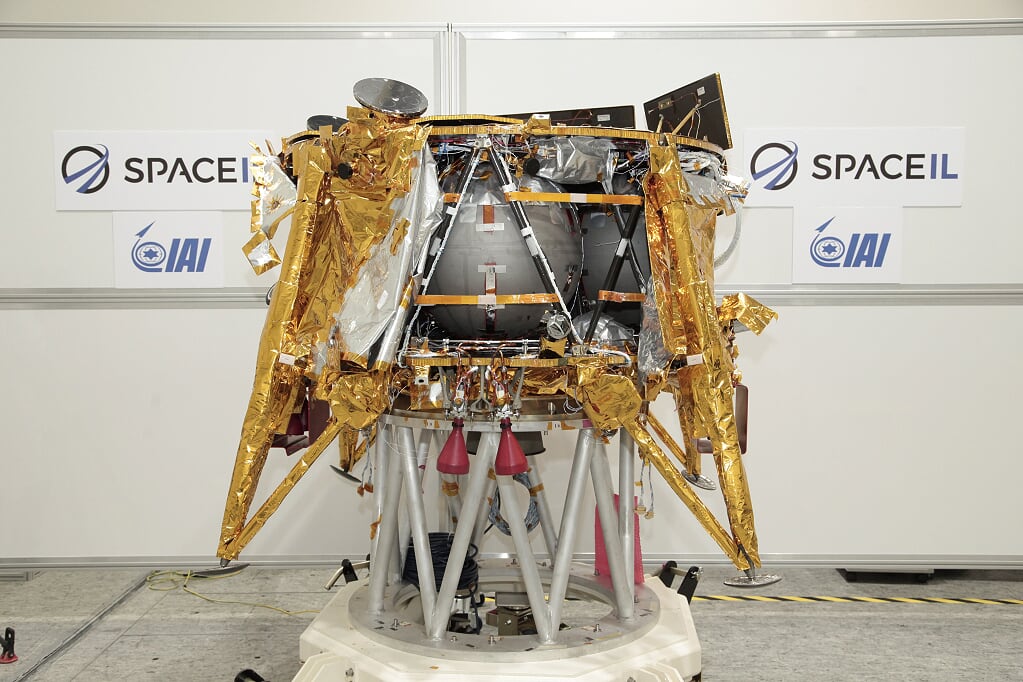
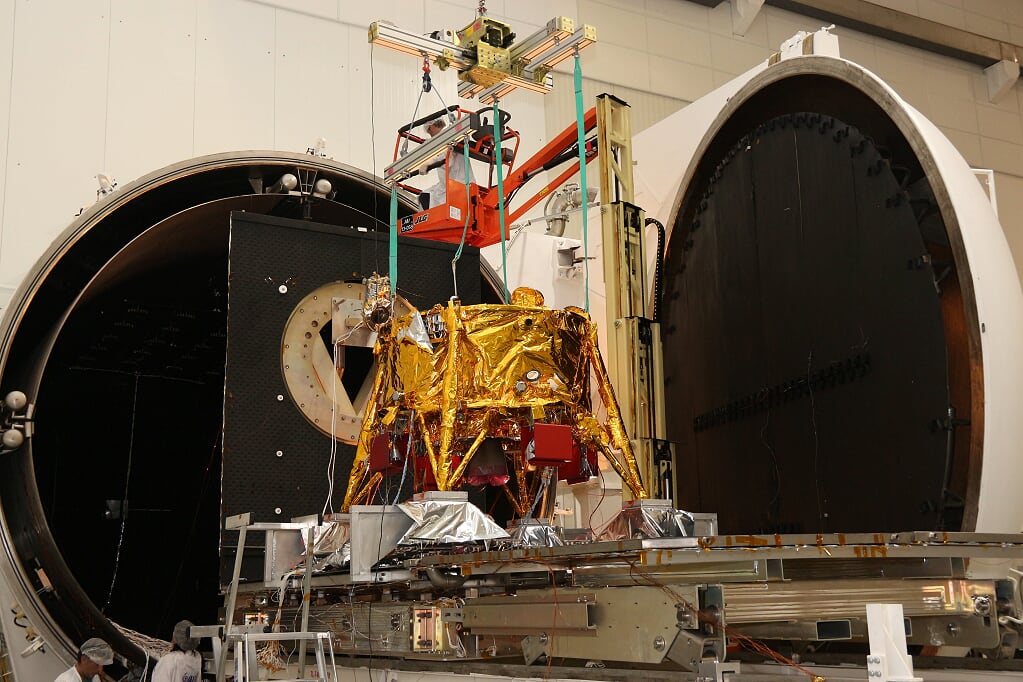
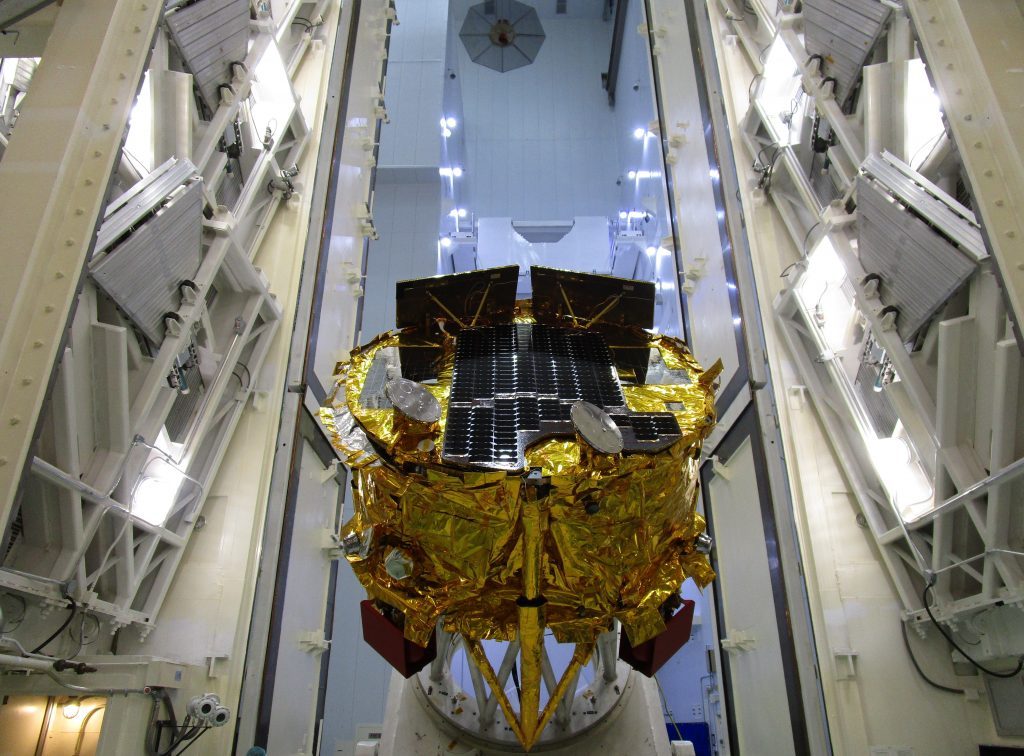
1. The engine.
The engine of the Bereshit device is a special adapted (for the Bereshit mission, its refinement was made by shortening the nozzle and increasing thrust) a chemical rocket unit of the LEROS family (for use on satellite platforms) - modification of LEROS 2b on hydrazine (monomethylhydrazine) with a thrust 45 kgf (441H), which is slightly more than its standard characteristics of 41.5 kgf (407H).
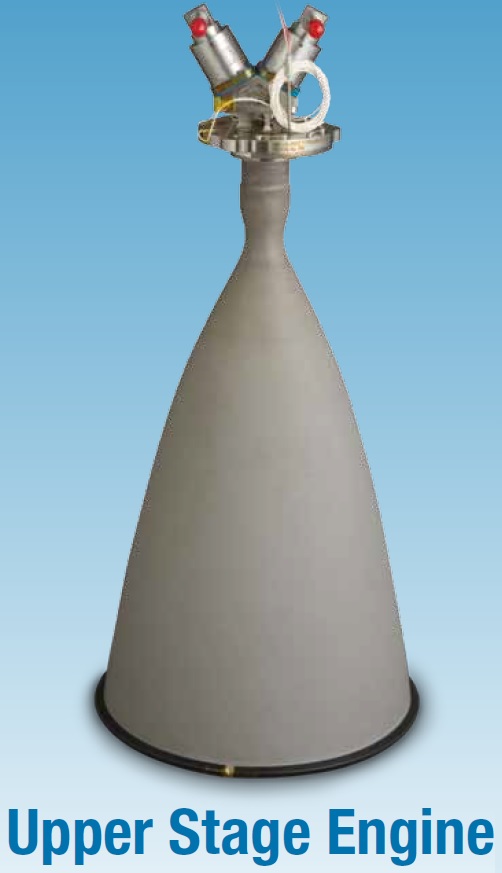
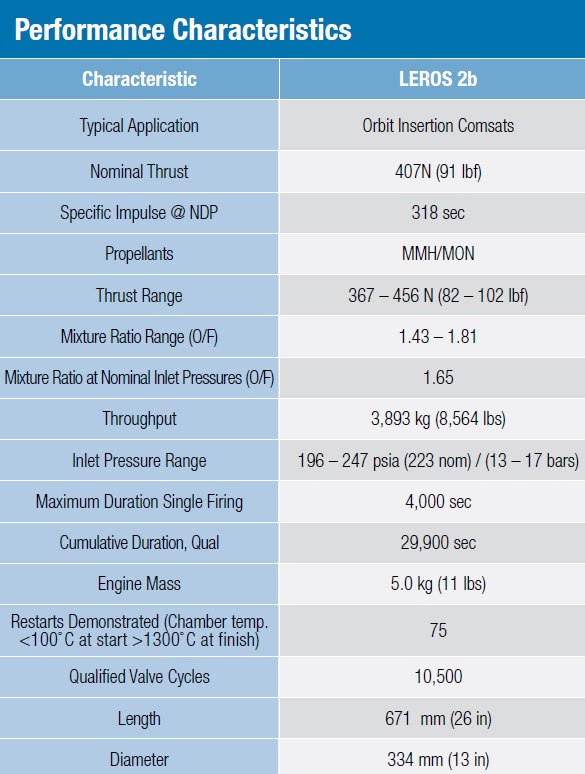
2. On-board electronics.

Cobham Gaisler's HiRel GR712RC processor
The main element of the on-board computer in the Bereshit device is the Gaisler HiRel GR712RC dual-core processor from Cobham.
Technologically, the chip is based on LEON SPARC and is manufactured using a unique radiation-resistant silicon technology.
The SpaceIL company became the first customer of this processor and SpaceIL engineers wrote special software for it before the actual delivery and sweep on the Bereshit device.
GR712RC - LEON3FT SPARC V8 dual-core processor . It can operate at a frequency of up to 125 MHz in the entire range of military frequencies. This provides up to 300 DMIPS and 250 MFLOPS peak performance. Integrates advanced interface protocols, including SpaceWire, CAN, SatCAN, UART, 1553B, Ethernet, SPI, I2C, GPIO, and others. It has high-speed interface bus for external SDRAM / SRAM / PROM / EEROM / NOR-FLASH memory. Proved radiation resistance - up to 300 krad. Low power consumption.
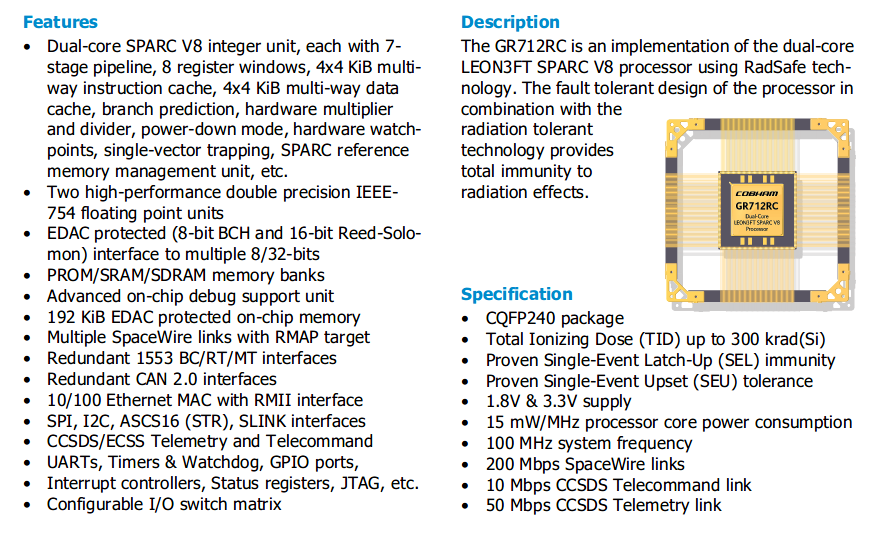

According to the data from the amartology comment : the beauty of this processor is that it was produced using the most common commercially available technology (TowerJazz 180 nm, made in Israel), about the same as the controllers for electric kettles do. Ensuring the robustness without interfering with the technology, at the expense of circuit design and topology of elements, which costs an order of magnitude less than if the technical process were specially designed.
3. On-board camera.
The on-board camera of the Bereshit device is an 8-megapixel Imperx Bobcat B3320C with Ruda optics.
Number of cameras on the device: 6 pcs.
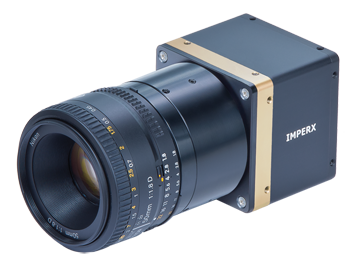
And the first shots from this camera should have been made just during the flight to the Moon of the Bereshit apparatus, and then after the landing (by the way, this camera will also shoot this camera, of course), if everything works out successfully, it is planned to capture the moonlight surface maximum number of frames, how much the camera can make before failure due to overheating.
Telemetry and data from the camera of the apparatus in the MCC project “Bereshit” are obtained with the help of colleagues from Sweden and the equipment of the science and space center in Kiruna , in the north of Sweden.
View of the camera in the process of assembling the device:
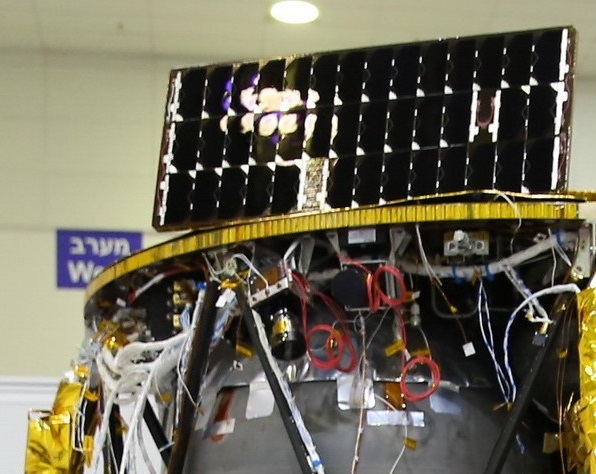
Here you can see in the picture how the camera and the tablet with the first photo from this publication are located .
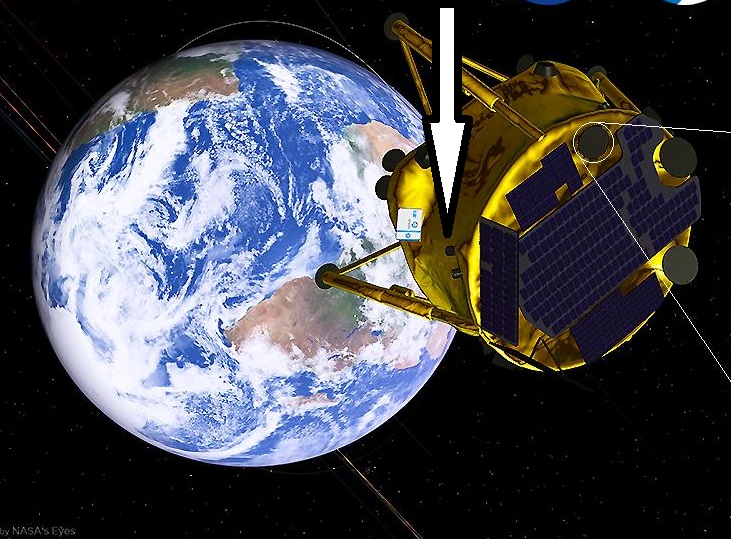
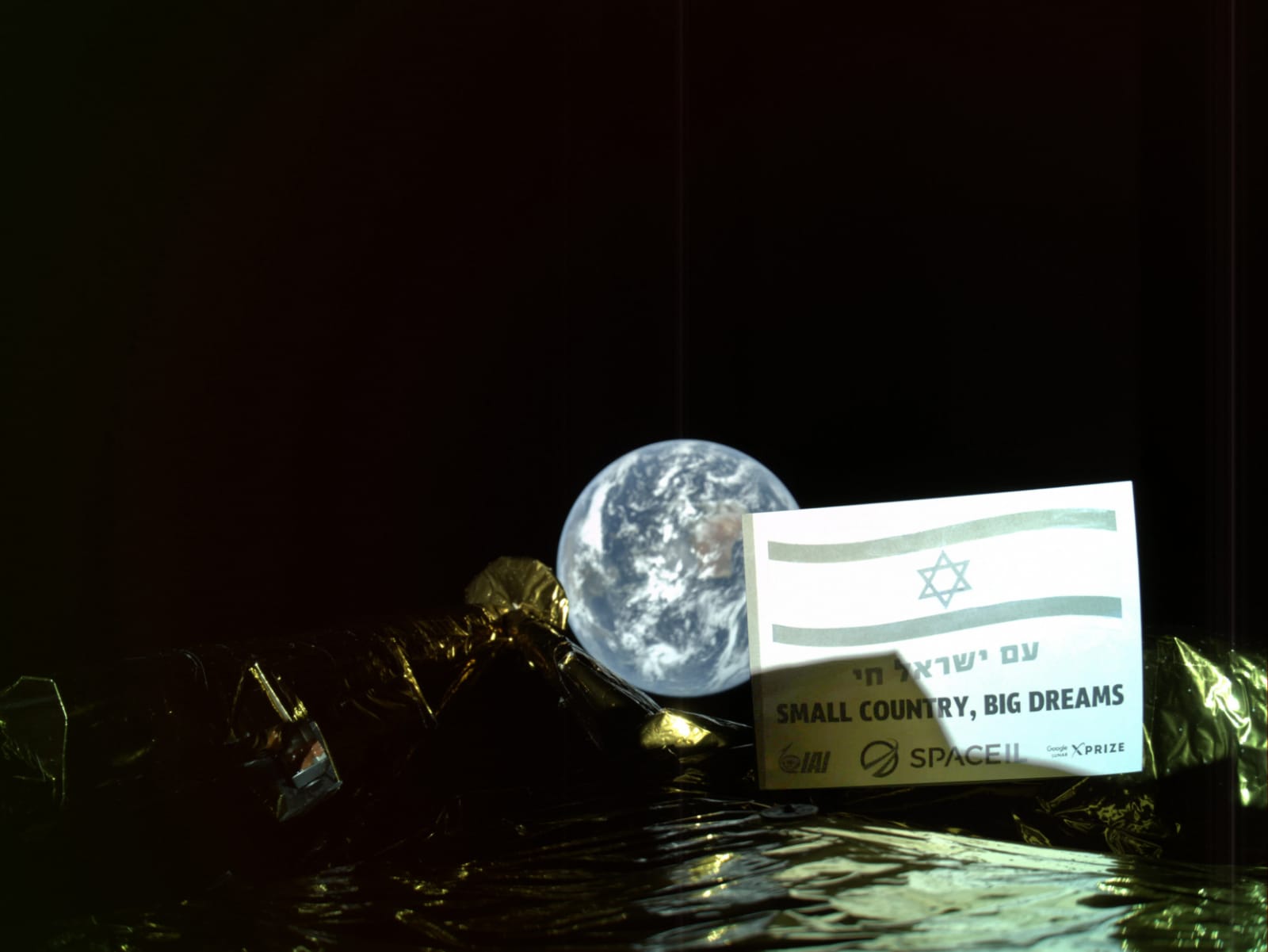
4. Scientific instruments aboard the Bereshit apparatus:
A magnetometer (manufacturer - Weizmann Institute, Israel) is placed on board the Bereshit apparatus, with which it is planned to conduct a series of measurements of the magnetic field of the Moon in the landing zone.
Also on the device "Bereshit" an array of laser corner reflectors is installed (manufacturer - Goddard Space Flight Center, USA).
Here is a photo of one of the reflectors, which is smaller than a computer mouse:
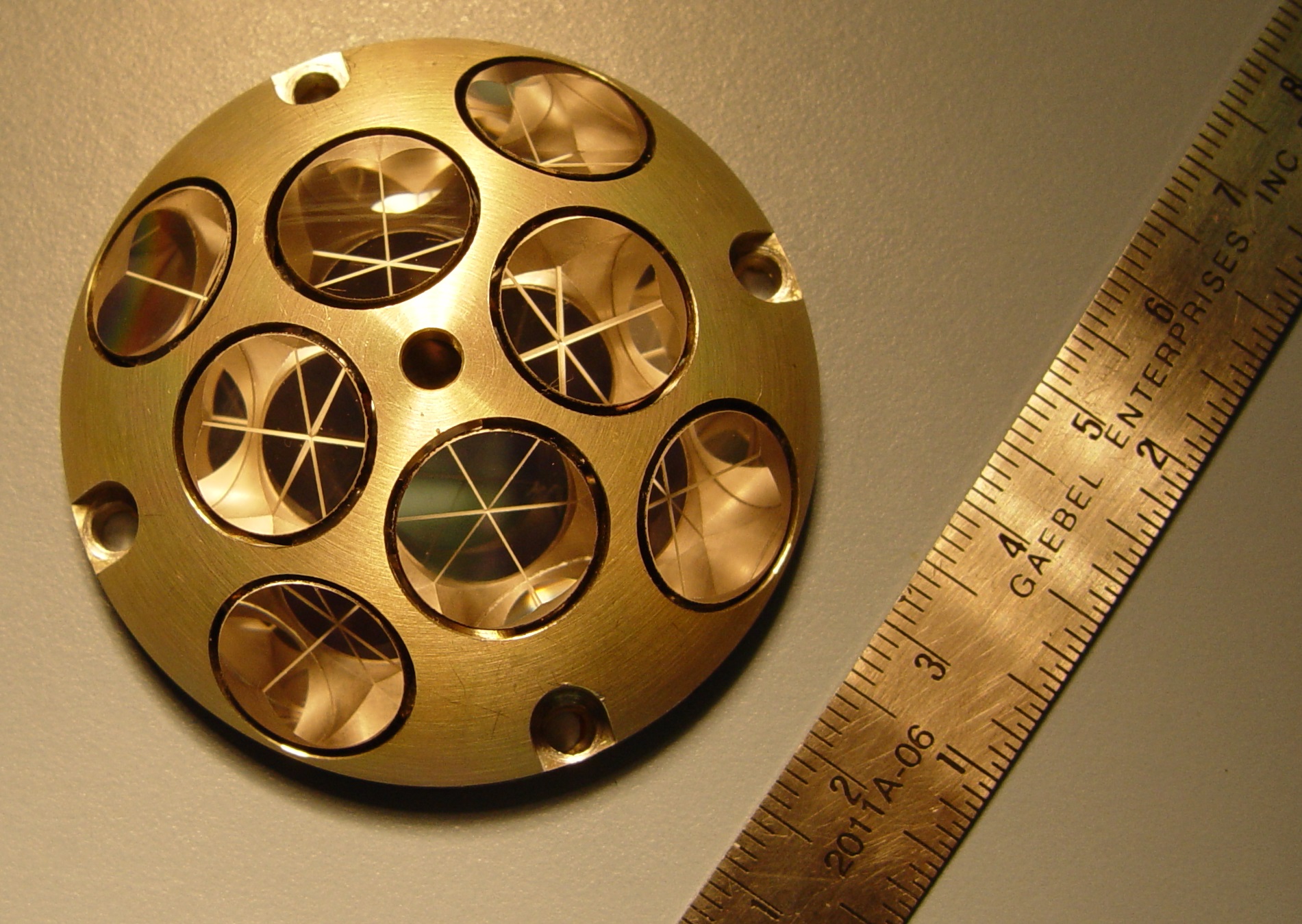
This tool has eight reflective planes installed in a domed aluminum frame. This structure allows the device to reflect light coming from either side back to the source.
The LRO laser altimeter (NASA lunar orbital probe), designed to compile a height map, will send laser light pulses to the Bereshit angled reflector and then measure how long light takes to go back.
Using this technique, NASA and SpaceIL engineers are planning to be able to determine the location of the Bereshit device with an accuracy of 10 centimeters.
Also, when Bereshit unit will perform the landing procedure, the LRO (NASA lunar orbital probe) will analyze the “exhaust gases” of the main fluid engine.
“Our team will try to“ see ”how the substances emitted by the engine of the vehicle will behave above the surface of the moon,” said John Keller, a NASA scientist from the LRO project.
5. Communication and data exchange system (telemetry and control).
SpaceIL does not have its own space communications center, so the organization of data transmission between the MCC on Earth and the Bereshit device in space is a complex process in which:
- a network of antennas of the Swedish Space Corporation (Swedish Space Corporation), thanks to which the Bereshit device transmits navigation commands and tracks its trajectory;
- NASA's remote space communications network (DSN) for controlling the Bereshit device and transmitting scientific data from the device to Earth after its landing on the Moon.
DSN is a network of radio telescopes and a system of dozens of huge antennas for communication with spacecraft in deep space, it is operated by NASA's Jet Propulsion Laboratory in Pasadena, California.
About the maneuvers of the Bereshit vehicle on the way to the Moon
Video on the implementation of the planned complex maneuvers apparatus "Bereshit":
According to preliminary data from here , you can make a table of space maneuvers of the Bereshit vehicle.

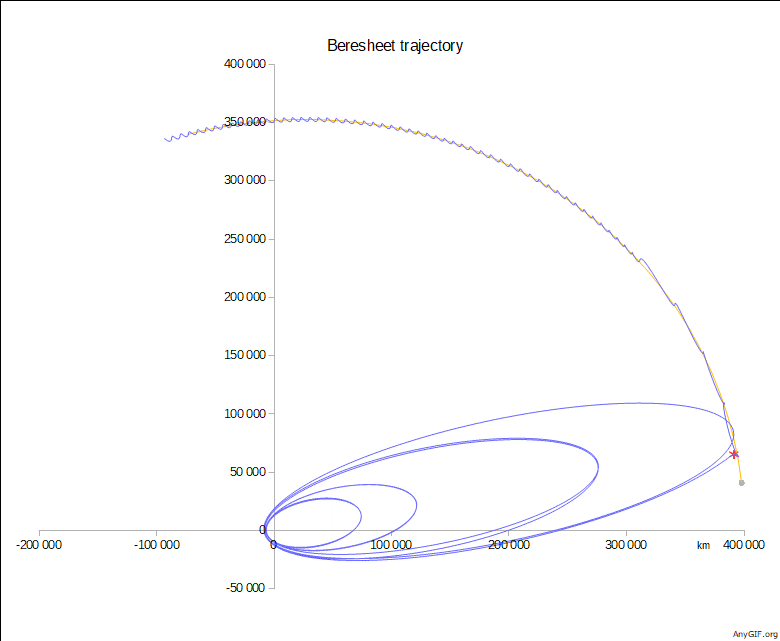

The main part of the flight is the execution of a series of maneuvers (turning on the engines for a few seconds or even minutes) to increase the apogee of its elliptical upholstered after each turn around the Earth.

Here is how this series of maneuvers looks in the description from SpaceIL:
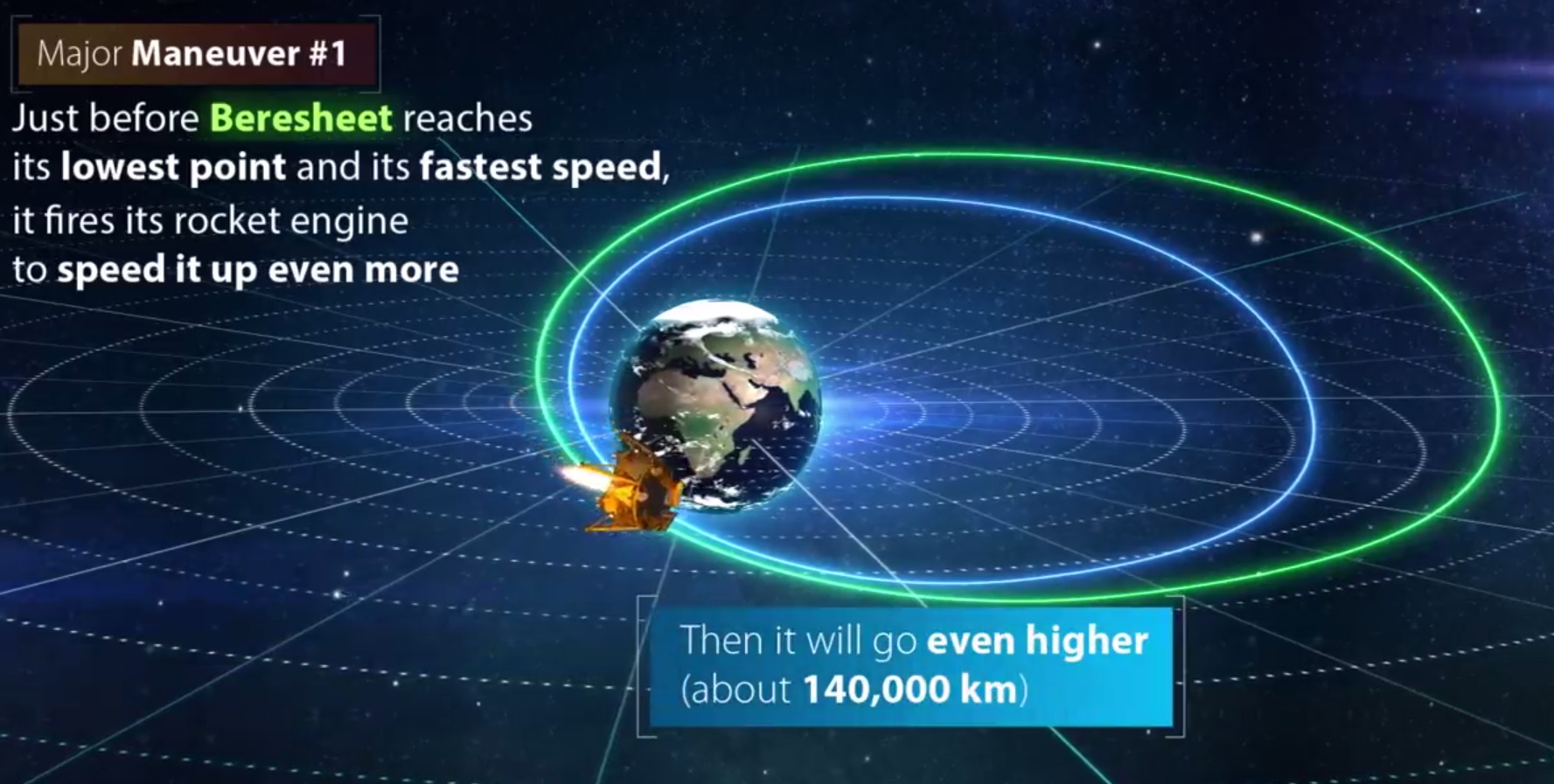

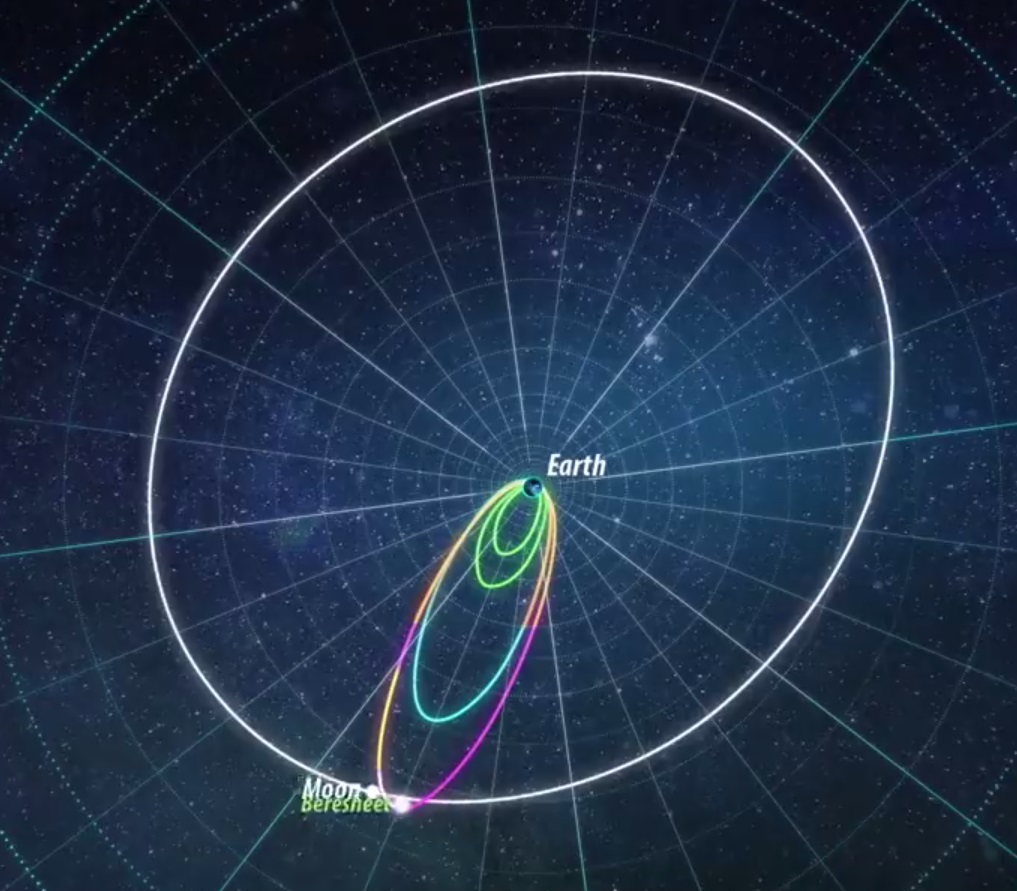
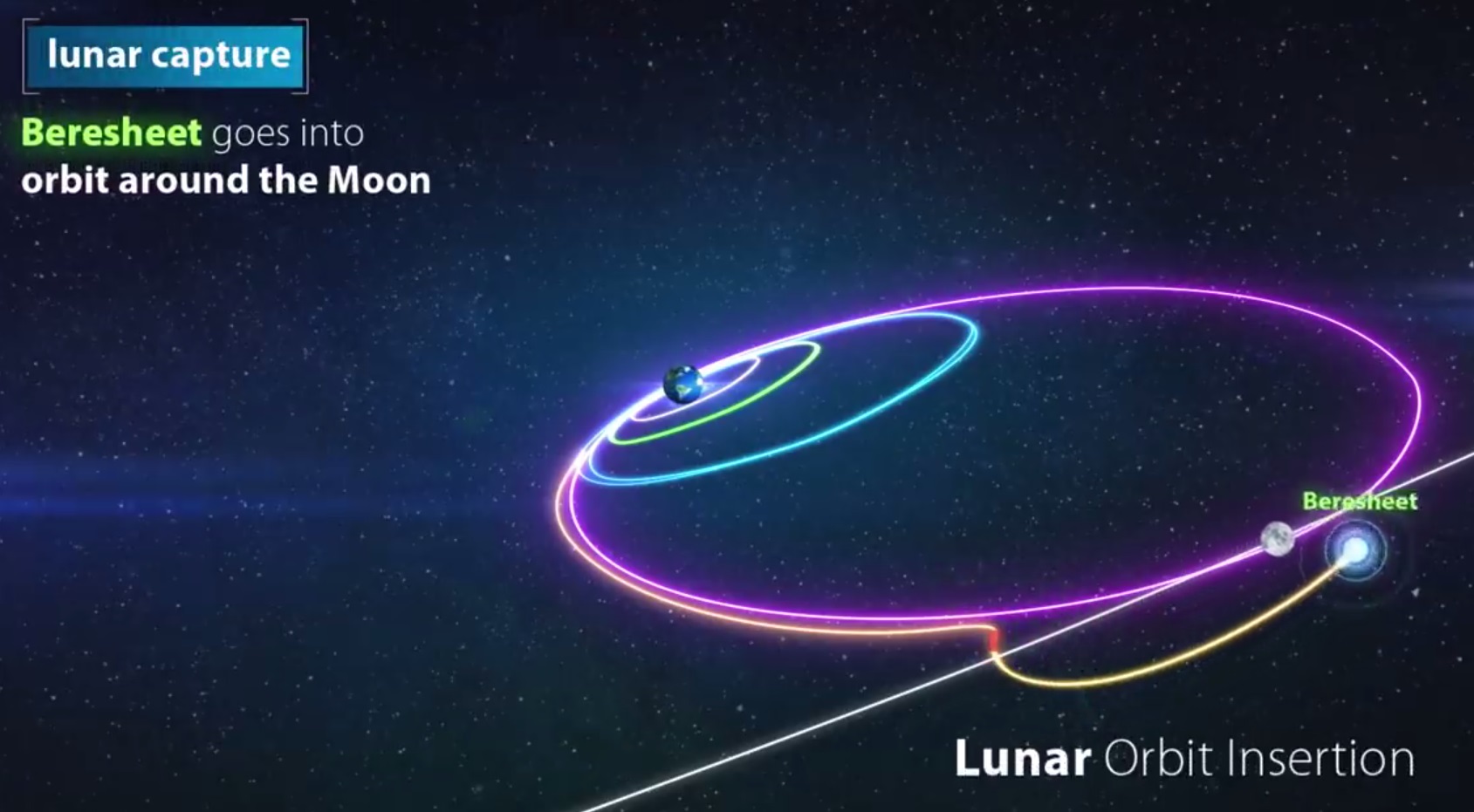


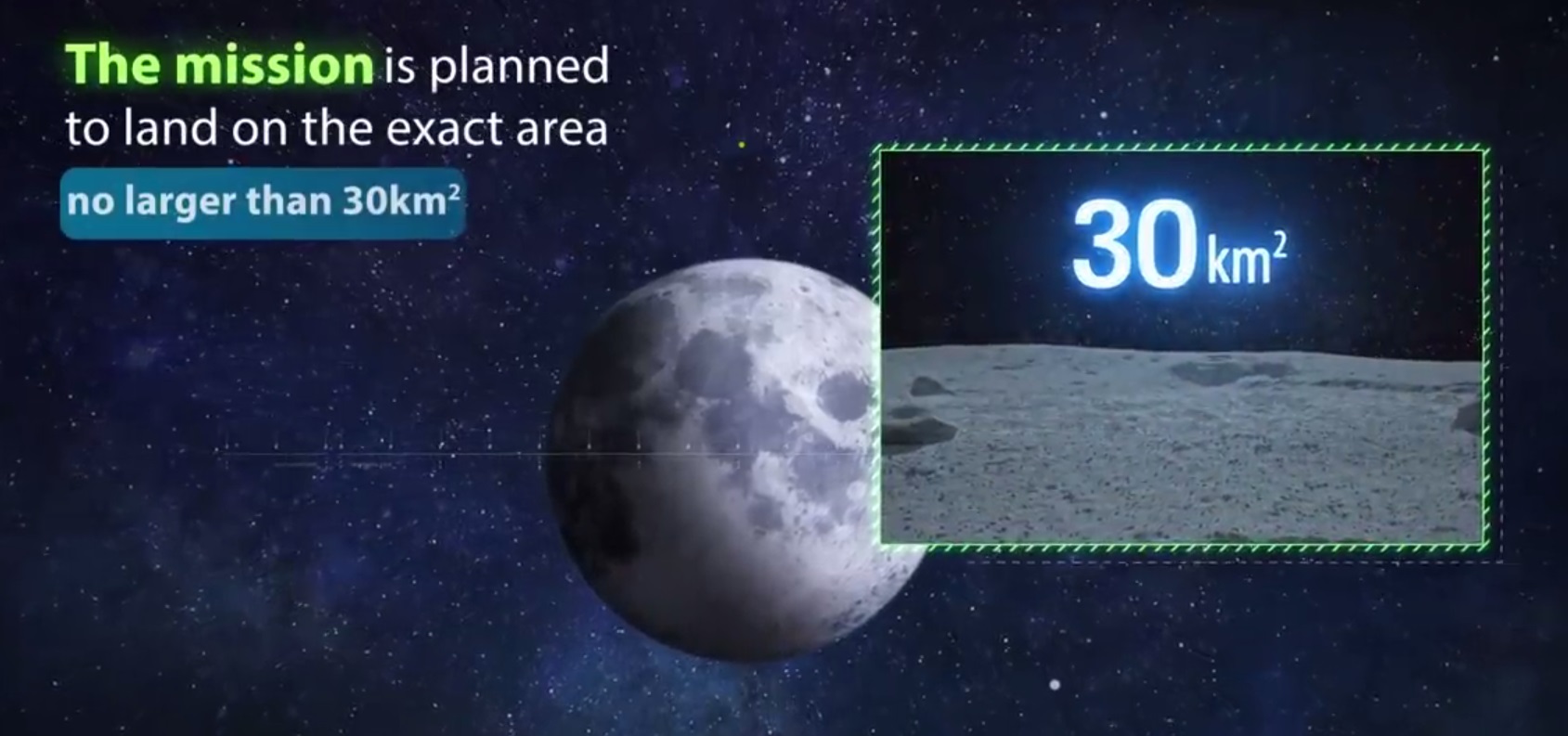




Analyzing information about planned maneuvers and current data on the state of the Bereshit apparatus, one can make up the following table :
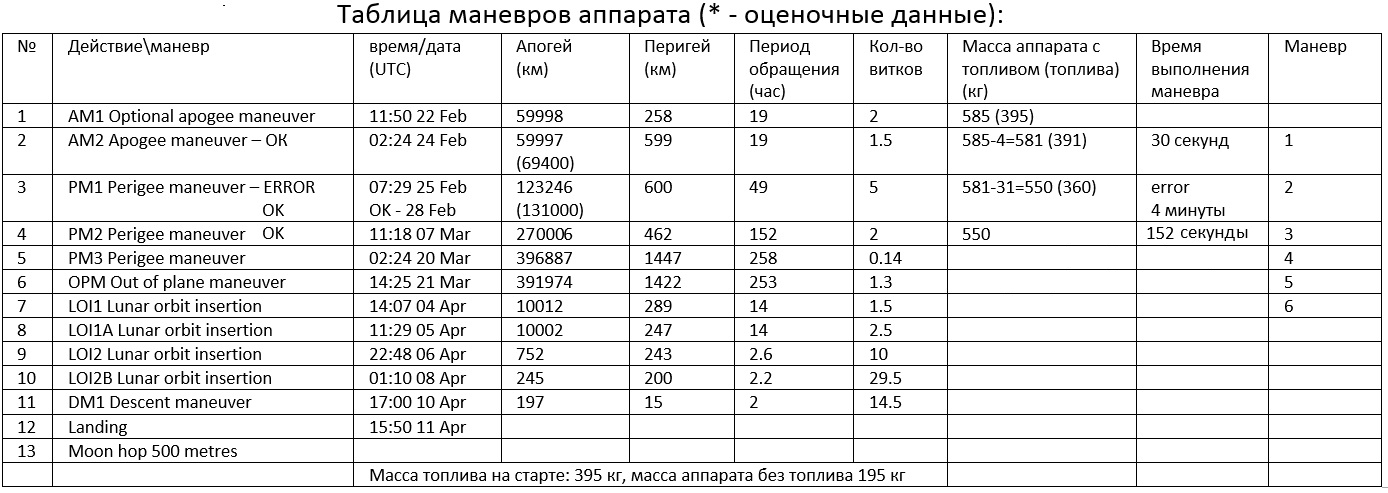
Reports on the status of the mission "Bereshit" laid out here twitter Israel To The Moon team SpaceIL.
Moon Travel Report # 1
Moon Travel Report # 2
Moon Travel Report Probem
Moon Travel Report # 4
Moon Travel Report # 5
On March 7, 2019, the third maneuver was successfully completed - an orbit with an apogee of 270000 km, the engine starting to accelerate for 152 seconds.
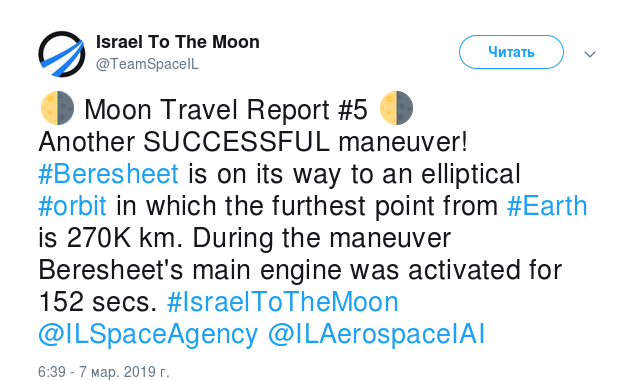

Path to the Moon of the Bereshit Apparatus
It turns out that the Bereshit apparatus, if successful, will beat a kind of record - it flies to the moon along the longest trajectory possible.
So it became interesting to me, but what kind of distance (albeit estimated, but still sufficient to understand the scope of this mission) will this device pass in 47 days in outer space?
We take the table of maneuvers of the apparatus for the basic data and obtain the following evaluation table for its trajectory:
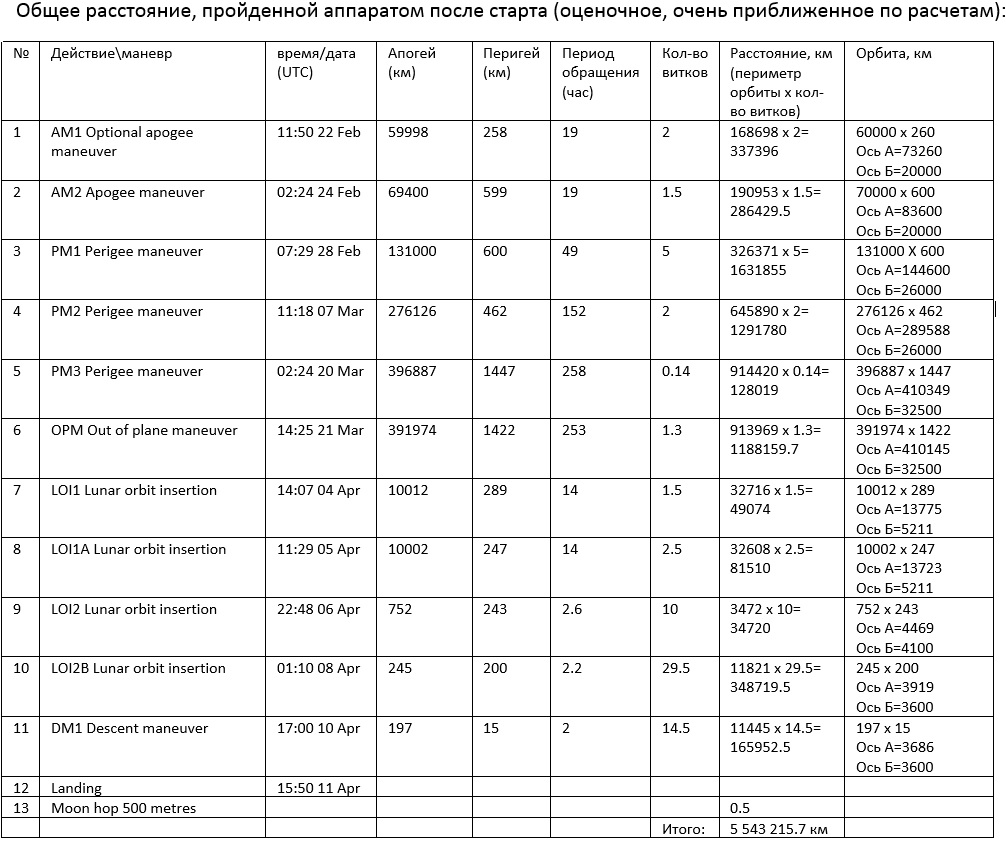
Thus, the Bereshit unit will fly more than 5.5 million kilometers in 47 days to reach the final point of its mission, the landing on the moon.
The average speed of 1354 m / s or 4874.4 km / h.
According to data from SpaceIL, the path is even longer - 6.5 million kilometers!
Place of landing apparatus "Bereshit"
According to estimates, the Bereshit device should make a soft landing on April 11, 2019 on a dark lava plain, known as the Sea of Clarity, not far from the region where the Apollo 17 mission astronauts leaped on December 11, 1972.
But after landing, it was previously planned (although this action is not stated in the latest reviews from SpaceIL and can be canceled at the launch stage - we are waiting in fact) to perform another maneuver - a sort of additional “jump” up to 500 meters (if there is enough fuel) to perform the “lunar rover-standard” on the movement on the moon and, perhaps, immediately climb to the sixth of eight places along the length of the movement on the lunar surface among the rovers:
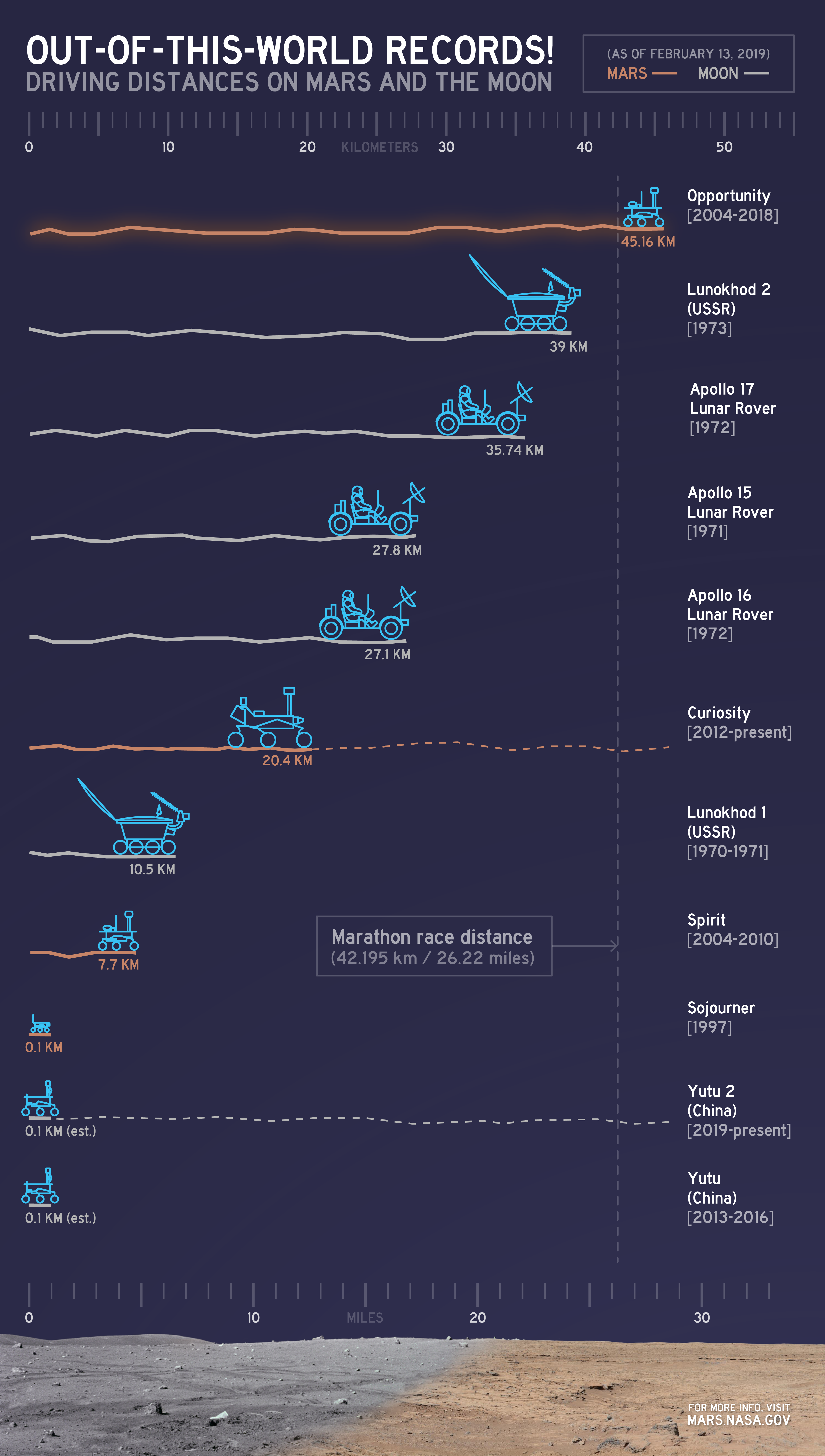
In any case, even without making the jump, it will be an interesting fit, especially since they promise to record it in VideoIL and show it after some time in open access.
The planned landing area of the vehicle "Bereshit":
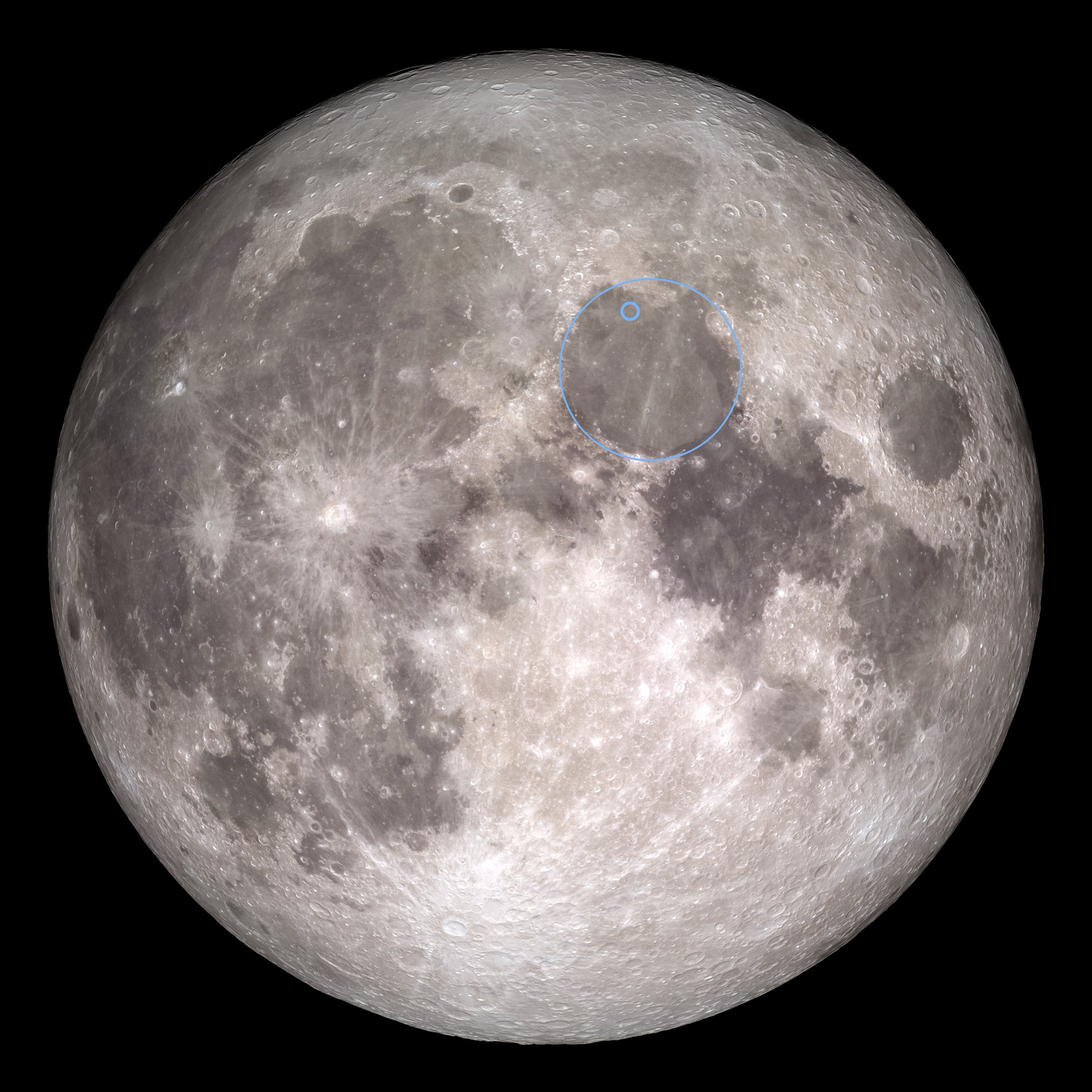


In any case, whether the jump will be made or not, the Bereshit unit will begin research, and it is also planned to make some high-resolution panoramic images of the lunar surface.
The Bereshit unit has no thermal protection and cooling systems, the estimated operating time on the lunar surface is about two terrestrial days (three days maximum), then its electronics will fail due to overheating, communication with the apparatus will be lost, and it will become a new lunar a monument to the Sea of Clarity, next to Lunokhod-2 (Luna-21 mission) and modules of the Apollo-17 mission.
Source: https://habr.com/ru/post/442922/
All Articles